Everything old is new again
by Mary Bailey

I bet some years they didn’t get a delicious beverage. I bet some years it was stinky and mouldy. Because much can happen on the road from grapes to wine. Yet, modern winemaking has taken the process far beyond its simple beginnings.
Maybe too far?
How wine is made and what is considered the right way or the wrong way has become a bitter topic of conversation among wine folks. On the one hand, we have what I’m going to call commercial wine, wine that’s made in large quantities in an industrial fashion, designed to taste the same, year in and year out.
On the other is the brave new world (actually a very old world) of natural wine, orange wine and biodynamics.
When I first started exploring wine in earnest, I tasted a lot of bad wine. I mean truly bad, wines with problems, such as the waft of vinegar or the aroma of nail polish, or just downright stinky wines with bacterial problems. (When I was a wine merchant we once opened a special shipment of half bottles of port destined for gift baskets that were filled with dead fruit flies.) This hardly happens now. Wine is much safer than it used to be. This is a good thing.
Now, I taste lot of wines that taste, well, manufactured. They may be correct but they have no soul. Or they are weighty, clunky, but without concentration, or are too round and smooth, or have sharp acidity on the finish or taste hot. Or they all taste the same, way beyond what you would expect from typicity or regional similarity. They are boring.
My dissatisfaction with the wine I was tasting led to a curiosity about wine on the fringe—made by people who farmed without machinery or kept sheep in the vineyard or farmed by the cycles of the moon. Wines made like people made wine years ago, before modern technology. Wine being made in different vessels and without any help at all. Hands-off wine.
I tasted some good ones, and I tasted some not so good ones. But they were never boring.
I let go of some preconceived notions. I learned to listen, to let the wine tell me what it wanted to be and not expect a certain taste or flavour (especially with the more unusual, indigenous or less- loved grapes).
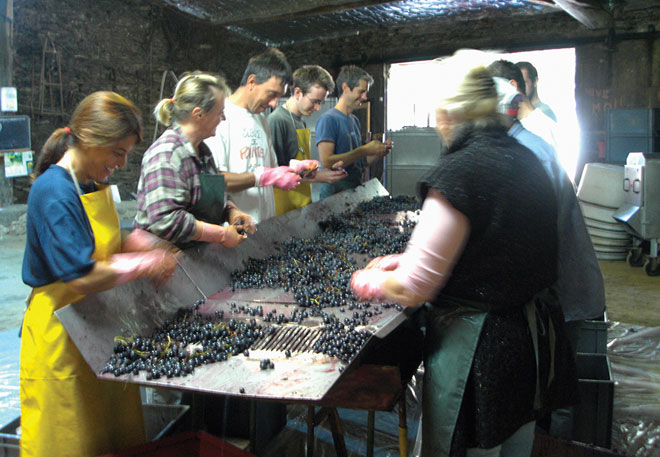
Here’s the thing.
Do we really want to know how wine is made? Many wine marketers think we don’t. Is it their fault? I don’t think so. They are pretty sure we don’t want to know, or, that we don’t care. We want to believe that the richness on the palate didn’t come from adding concentrated grape juice (aka sugar), or that the oak flavours came from expensive French barrels not dusty chips, or that the deep colour didn’t come from another type of grape juice, one that became something called Mega Purple and that pleasing blackcurrant aroma? It may have come from the yeast my friend, not the grape. Sorry.
For the most part they are probably right. After all it’s just wine. We would rather believe the story on the back of the label—kind of like when you were a kid and wanted to live in the valley of the jolly green giant—that the wine is made in the vineyard.
But for those who do want to know it’s like entering a house of mirrors. Nothing is exactly like it seems. What is natural wine? And why is this wine orange? What is biodynamics? The information isn’t always on the back of the bottle. These are questions I get asked all the time.
What is natural wine?
The absolutists say natural wine is made without oak, no irrigation, nothing added, no yeast, nor tannin powder nor enzymes. Sulphur? Verboten.
Others say natural wine is wine mde with just grapes, farmed organically with nothing taken away or added except maybe a bit of sulphur right before bottling. The fermentations are spontaneous and can take a long time, months even. Most would say that natural wine can only come from healthy grapes grown in a robust environment with lots of flora and fauna.
Proponents feel that natural wine is more about an attitude towards grape growing and winemaking, rather than being about a particular method or
type of equipment. This is the general consensus, but there’s no regulation that defines natural wine and the term has come in for quite the beating.
Even the people who make natural wine don’t like the term, but it is a way to try to categorize these wines. Here’s how Michael Cody of Sedimentary Wines puts it.
“People need to be able to tell you the way the grapes are grown, how are they pressed, what additions did they make? Is it unfined or unfiltered? Then you make your own judgement.”
Michael’s company, an import agency based in Vancouver, works with around 40 different wine producers who would fall into the natural wine category, none of whom are all that comfortable with the label. You won’t see the words on a label, even on the back.
For now we’ll use the term natural wine until something better comes along.
What I have noticed: the wines are often lowish in alcohol, rarely exceeding 14 per cent even from hotter climates. The best examples are balanced, gentle and roll across the palate. There is often a tangy salinity, sounds odd, but tastes great. The flavours are exciting, complex and often unexpected. Natural wines can be any colour, dry or sweet, still or sparkling, but the ones garnering the most controversy are the orange wines.
Orange wine.
I first encountered orange wine at Vin Italy in 2011. I was curious, what is this orange wine I’ve been reading about that is so contentious? Taking a lot of the flak was Stanko Radikon, a producer in Italy’s Collio region, hard by the Slovenian border. I wanted to meet him.
He was gregarious, at their booth with his son Saša, pouring tastes into black glasses; “because people make assumptions when they see the colour,” he said.
I didn’t know what to think, it tasted like nothing I had ever encountered, which was exciting and a bit weird. How to classify this wine? But I liked it, even if I didn’t know why. I was instantly intrigued and wanted to try every orange wine I could get my hands on. Next up was a visit with Josko Gravner. Alas, that didn’t happen, but we did taste his wine whenever we saw it on a wine list. (I still call that trip Looking for Gravner.)
Radikon and Gravner were some of the first in the region, along with Dario Princic, (and the Slovenians) to revive the practice of fermenting grapes on their skins, first introduced when the Hapsburg Empire became part of Italy. Essentially, making white wine as if it were red, using the white grapes of the region such as Ribolla Giallo and Pinot Grigio. The skins do more than colour wine, they help create flavour and texture. The skins also protect the wine, allowing the maker to use less or no sulphur against spoilage and oxidation. Gravner also make their wines in amphorae (large clay vessels).
What is an orange wine? You could say it’s a white wine made like a red, including the skin, pips, stems (rather than just the juice), but most would add that the wine is made with no external temperature control, no added yeast and little or no sulphur. It can stay on the skins for days, weeks, even months.
The first thing you notice is a distinct coppery hue, the wine looks burnished. The second is a whiff of on-purpose oxidative notes, such as nuttiness, and tannin (from the skins) and a host of flavours not usually associated with white wine, depending on the grape variety—herbs, flowers, spicy notes, earth.
Orange wine can be a little salty. The wines can taste sherry-like. If you like good dry Sherry you will probably enjoy orange wine. Then again maybe not, not everybody does. There is no right and wrong here. (I recently shared a bottle of Gravner at Bar Bricco with some friends. One was not a fan, saying, “of the 500 or so wines we’ve had together, this is the first I haven’t liked.’
You could say all orange wines have skin contact, but not all wines made with some skin contact are considered orange wines. For example, the Okanagan’s Kettle Valley has long made a Pinot Gris with some skin contact resulting in a wine with a decidedly orange hue, yet the flavours are those of a white wine. The slightest bit of contact with the dark skins of that grape gives the wine colour.
Orange wines are best drunk like reds, in a big glass, not too cold. Where orange wine really shines is with food— their complex flavours lock in on the palate to create a sublime food and wine experience.
Some say orange wine is a fad with too many undrinkable wines with obvious faults. I have tasted one terrible orange wine. On that trip to the Collio we stopped at a small cellar, a garage really, a dirty and smelly shed. The winemaker told us he was an acolyte of Gravner; perhaps it was his first vintage. We pretended to taste the wine he presented and got out of there as soon as we could. Bacterial contamination is the same the world over.
Orange wines and natural wines often get the bad rap that they are not well made. In my experience, as far as faults go, besides the moment with dirty cellar guy, the opposite is true. The wines I’ve tasted are well-made and healthy, and a pleasure to drink. One thing is for sure, there are a lot of opinions floating about and words being written about a wine style that is less than one percent of all wine being made.
Think of it this way—it takes either a lot of luck or a lot of experience to make wines without intervention. As Rudolf Trossen, who makes a small amount of spectacular wine in the Mosel in a low- intervention, biodynamic fashion, says: “you cannot ride a bicycle with no hands until you know how to ride a bicycle.”
Maybe we should start calling natural wines wine made with no hands.
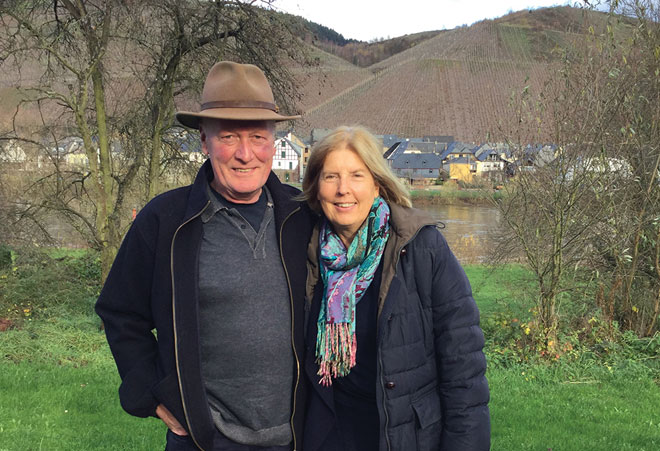
Then I went to Georgia.
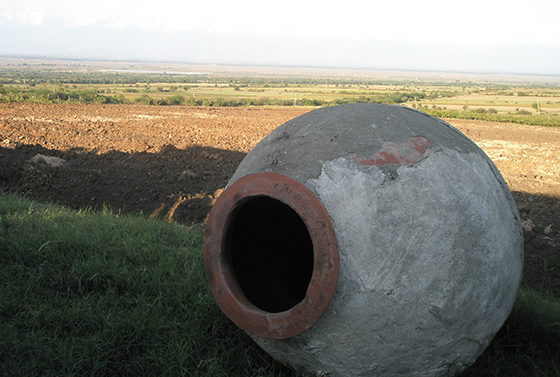
It seems that everyone in Georgia made wine with no hands. Every backyard had a quevri (the Georgian word for amphorae), and every family grew grapes and made wine for themselves. The only lousy wine I tasted there was from large factories, a remnant of the Russian occupation. All around us were clean, healthy, fresh and interesting wines, only unusual because the grapes were Georgian varieties never experienced before. The most startling were the wines of the Alaverdi monastery—an aged white made from Kisi tasted like fabulous white Burgundy, elegant, concentrated and full of vitality. According to the technical director and enologist at Alaverdi, Teimuraz Glonti, “Grape bunch skeleton is rich with terpenes, fatty acids, lactose, fragrant spirits and esters which participate in the complicated process of fragrance making; phenol compounds create a high level of antioxidant compounds.”
That trip was also memorable because I met Isabelle Legeron and Alice Feiring. These two are the standard-bearers of natural wine. Both are quite sure that you cannot make natural wine without great fruit. Truly, wine made in the vineyard.
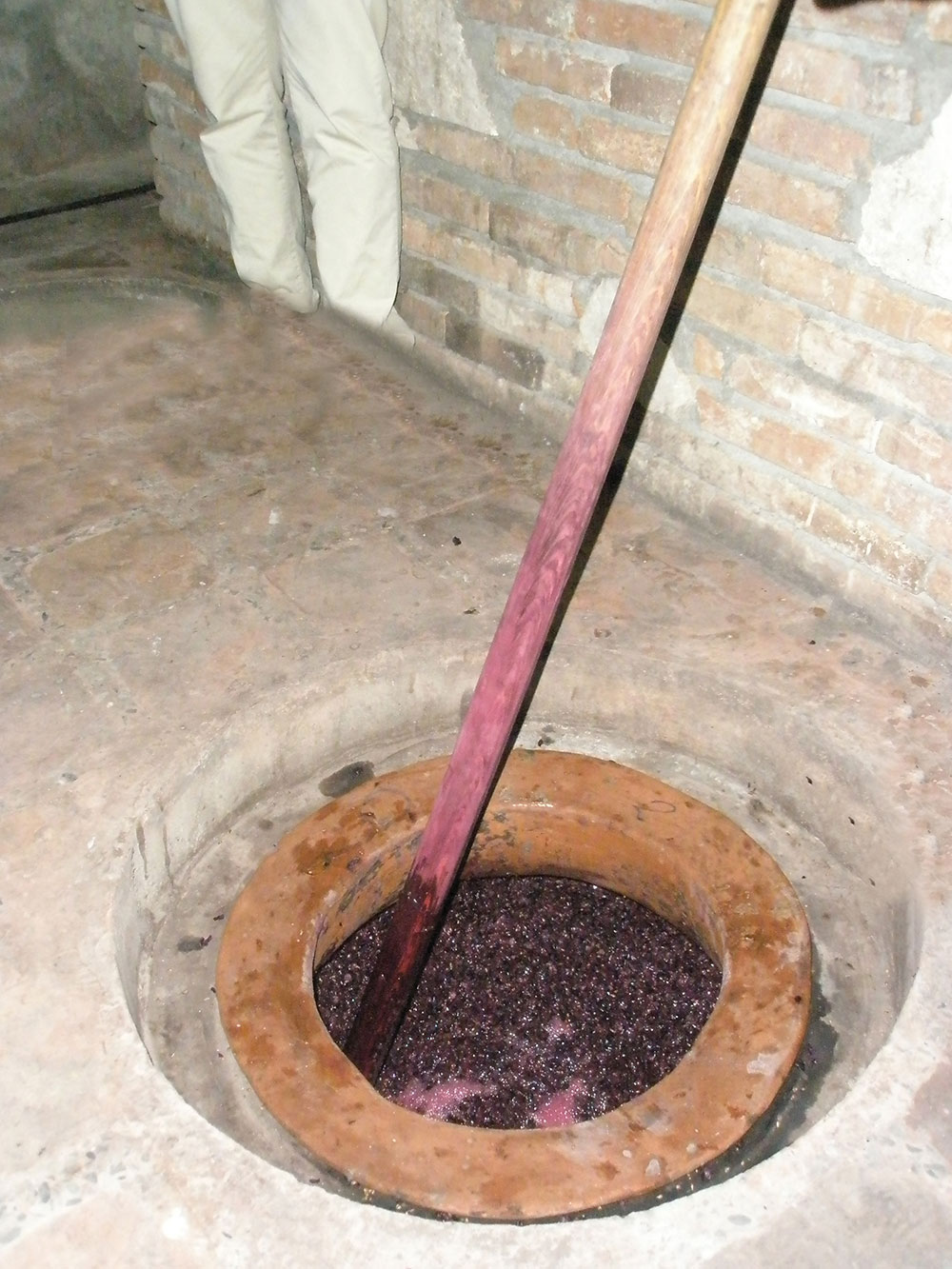
Click to zoom
That brings us to biodynamics.
What is biodynamics? A set of principles formulated by Rudolph Steiner, a turn of the century Austrian philosopher and scientist. The basic premise is that we are part of a much larger system, the cosmos, which affects daily life in ways we can only imagine.
The concept is that a farm can be a healthy, self-sustaining organism as long as there is a variety of things growing (polyculture) and animals to create balance. The way to stay in balance was about healthy soil full of microorganisms. There is a cheerful DIY aspect to biodynamism, the idea that a piece of land in balance can be a closed loop system, getting everything it needs from the plants and animals that exist there.
Loire wine producer Nicolas Joly is credited with bringing biodynamic practices to the forefront in growing wine; it’s no surprise that the natural wine movement first gained traction there. Some of the most rare and costly wines are made biodynamically, Burgundy’s Domaine de la Romanée- Conti for example. Quartz Reef and Felton Road in Central Otago are also biodynamic.
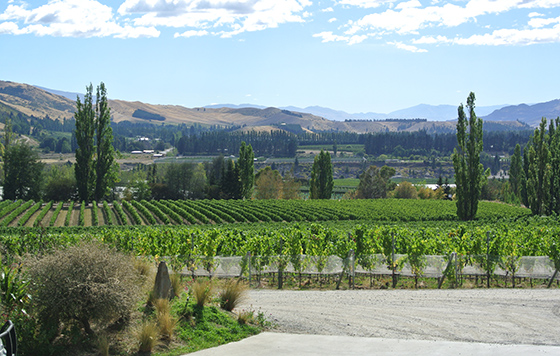
I went to Domaine Léon Barral in 2007 to learn about biodynamics and to taste more of their delicious wine. It wasn’t easy to reach Didier Barral, who does everything by fax or telephone. He didn’t have a cell phone or a website at the time, believing that the electronic signals interfere with the natural rhythm of the earth.
Didier grows grapes in Faùgeres in the south of France. Among the 74 acres, you’ll find only about half the land in old vines of indigenous varieties such as Terret, Carignan, Mourvedre, Rousanne. The rest is scrub, trees and grasses where a herd of cattle roam. There are also chickens, pigs, dogs. The wines are fermented with ambient yeasts; he uses no sulphur, and the wines are not racked, fined or filtered. He does mature the reds in barrel for a time. The wines are spectacular and highly sought after and available in Quebec.
I think of him whenever someone tells me that it’s not possible to make wine like this.
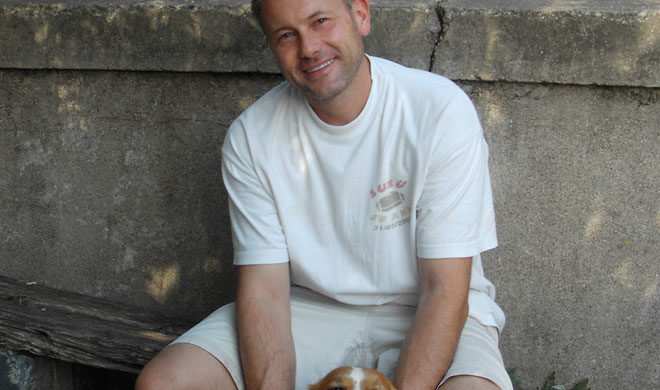
A biodynamic vineyard remains the ideal for many wine people.
I called Christine Coletta of Okanagan Crush Pad Winery when I heard that she was presenting their wine at Raw, Isabelle Legeron’s natural wine fair in London this spring.
“We are moving towards biodynamics, it’s the best way to farm,” she said. “Our consulting winemaker Alberto Antonini is directing our path to what we are calling authentic wine, wine that evokes the place it’s grown. We are employing natural winemaking techniques. We’re not adding anything, no nutrients, not using oak, not filtering. We are using wild yeasts and not adding any SO2, or not much,” she says.
“I had always wanted a piece of land, I wanted the feeling you get from that. When we planted in 2006, we were told you can’t be organic. Alberto got us thinking in a different way, and in 2014 we started the conversion in the Switchback vineyard. The new vineyard in Garnet Valley is organic from the start. We have 300 chickens and ten sheep and one Great Pyrenees who lives with the sheep to keep the coyotes at bay. We have vegetables and hayfields and three Dexter cattle are coming.”
Okanagan Crush Pad appears to be all in. But it’s not without risk.
“I also keep in mind something that Harry McWatters said to me a long time ago: ‘if you want to do something crazy you have to be prepared to drink the wine yourself.’”
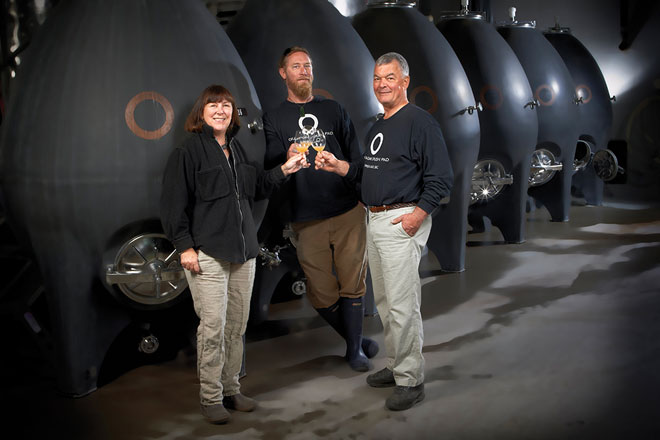
I like that some wine growers are out on the wooly fringes experimenting. I like that some wines are being sealed with beeswax, without a cork or screw cap.
I like that some wineries are telling us what they are doing, or not doing, with their wines. I like that there are all these different wines to try.
Think of wine as being on a continuum, with wines like Radikon and Gravner on one end, and Apothic on the other, and you’ll have it about right. In the middle lies the vast number of winemakers just trying to do the best they can with the vagaries of the weather, the fruit they have and the fickle wine-drinking public.
Are you ready to explore? Keep in mind that trying natural and orange wines may put a dent in your budget— especially if you have been drinking on the Apothic end of the continuum. Nowhere is the axiom you get what you pay for truer than in wine. If you want to drink wines that are handpicked and handmade in small quantities, it will cost more than wines that are machine picked and made a zillion gallons at a time. Add in fashion and scarcity and the prices jump even more.
However, you will find several interesting wines in the $25-30 range to get you started.
Three natural wines to try.
Domaine Majas Cotes Catalanes Blanc (France) $25
A lively Rolle and Macabeu blend, made from organic grapes. Gentle limey citrus, fresh herbs, stones and a lengthy finish. Loved it with smoked salmon.
Chat Fou Côtes du Rhône Éric Texier (France) $18
Former nuclear physicist Éric Texier grows biodynamic grapes in the Rhône Valley. The Crazy Cat is fresh and lively with subtle berry, herb and rose notes.
MunJebel 8, Frank Cornelissen (Sicily, Italy) $50ish
Lively acidity, slightly nervous, tastes like spring—earthy greens and wild strawberries with a hint of smoke and tart cherry. Don’t let its relative lightness in colour and weight put you off—this Nerello Mascalese, a rare mountain wine from Mt Etna, has complexity and depth in spades.
Glossary
Mousyness is a bacterial infection associated with oxydation of a wine, after racking for example and also in wines with a higher Ph (less acid). It leaves behind a taste of, well, dead mouse.
Reverse osmosis/spinning cones are used to take out something undesirable in a wine— smoke taint, water or alcohol.
Terroir: a French concept that takes into account geography, climate, aspect, soil and cultural practices to define taste. North American wine people often use the term to mean just place instead.
Wine Additives
Ammonium Salts Diammonium phosphate revives dying yeast and keeps it from producing too much sulfur.
Colouring agents MegaPurple is the most common and is made from concentrated Rubired grapes. Colour is not a factor of quality necessarily but most consumers prefer deep red wines.
Enzymes Proteins that release aromas, alter color, improve clarity and speed up aging.
Fining and Clarification Agents Some are traditional such as egg whites or isinglass but have come under fire because they are not vegan.
Gum Arabic softens tannins, reduces astringency and contributes a creamy mouth feel.
Oak chips, sawdust or essence make a wine taste as though it has spent time in a much more expensive oak barrel. Sort of.
Sugar Usually found in the guise of concentrated grape juice as opposed to sugar crystals. It used to be used only to provide enough sugar to allow fermentation of unripe grapes (chaptalization). Now it’s used to increase palatability and mouth feel. Inexpensive wines that are super smooth? That’s the sugar talking.
Stabilisers Copper sulfate is added to remove free sulfur in a wine (like putting an penny in your flowers). Then the copper sulphate is removed.
Sulphur Dioxide is used as a preservative. It kills microbes and prevents oxidation and further fermentation. It is a byproduct of fermentation, and its use is going down. Demeter a certification body for biodynamic viticulture, allows up to 100 ppm of all suphur (free and fixed). If you open a wine that smells like a burnt match, it does blow off over time.
Tannin Powder comes from the nutgall of trees, not grapes.
Tartaric Acid boosts the acid found naturally in wine. Acid is important for taste and for the health of the wine.
Velcorin (dimethyl dicarbonate) a controversial microbial control used in food as well.
Vitamins the B Thiamine Hydrochloride helps yeast make higher alcohol wines (over 14 per cent)
Yeast Designer yeast can make a wine taste a certain way and contribute to fermentation over 14 per cent when regular yeast poops out.
Wine without Walls, a 2016 Vin Italy competition chaired by Alice Feiring.
Criteria: wines entered must not be the result of practices such as micro-oxygenation, the use of concentrators, reverse osmosis, thermo-vinification, malolactic fermentation block and vineyard irrigation.
The wines must be wines with either no sulphite added or (category two) have less than 40mg/l total sulphites.
The judging panel uses the following criteria for scoring: Liveliness, evolution in the glass, balance, drinkability; emotional impact, savouriness, transparency and sense of place.
Thank you to Jerzy Maslanka, Elite Brands, for pointing out that Radikon does not make wine in amphorae. The text has been edited to reflect this.
Reading List
- Understanding Wine Technology: The Science of Wine Explained, David Bird
- The Battle for Wine and Love: or How I Saved the World from Parkerization, Alice Feiring
- For the Love of Wine: My Odyssey through the World’s Most Ancient Wine Culture, Alice Feiring
- Natural Wine, Isabelle Legeron
- Biodynamic Wine Demystified, Nicolas Joly